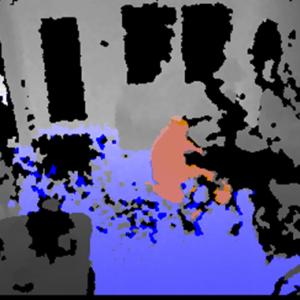
Sensor system can detect a senior citizen’s fall three weeks in advance
Everyone falls from time to time, but falls are very common among the elderly — those 65 and older — and can have more serious repercussions. Elderly falls can lead to broken bones, head injuries, hospitalizations or even death.
In order to minimize this risk, researchers from the Sinclair School of Nursing and the College of Engineering at the University of Missouri are using sensors that measure in-home gait speed and stride length to predict likely falls. This technology can assist health providers to detect changes and intervene before a fall occurs within a three-week period.

“We have developed a non-wearable sensor system that can measure walking patterns in the home, including gait speed and stride length,” said Marjorie Skubic, director of the MU Center for Eldercare and Rehabilitation Technology and professor of electrical and computer engineering. “Assessment of these functions through the use of sensor technology is improving coordinated health care for older adults”
In the course of their research, the team collected data from sensor systems in place TigerPlace, an innovative aging-in-place retirement residence, located in Columbia, Mo. The system generated images and an alert e-mail for nurses that displayed irregular motions. This information could be used to assist nurses in assessing functional decline, which could lead to varied treatments and ideally fall prevention.
“Aging should not mean that an adult suddenly loses his or her independence,” said Marilyn Rantz, Curators’ Professor Emerita of Nursing. “However, for many older adults the risk of falling impacts how long seniors can remain independent. Being able to predict that a person is at risk of falling will allow caretakers to intervene with the necessary care to help seniors remain independent as long as possible.”
The team’s results from an analysis of the sensor system data showed that a gait speed decline of 5 centimeters per second was associated with an 86.3% probability of falling within the following three weeks. The researchers also found that shortened stride length was associated with a 50.6% probability of falling within the next three weeks.
Rantz and Skubic have recently received an award from Mather LifeWays ® Institute on Aging for their research, which has shown that by integrating care coordination and sensor technology at TigerPlace, residents can live independently an average of four years compared to the national average of 22 months.
The team’s future research will focus on how nurses can the fall prediction statistics to intervene before the fall occurs.

Comments are closed, but trackbacks and pingbacks are open.